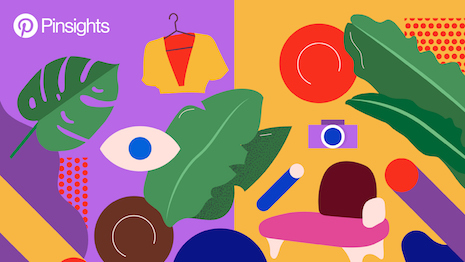By Kamiu Lee
Many major digital publishers have been in the news this year following problems with their offerings to advertisers.
Facebook, a pioneering social media site for marketing and advertising, found itself in the middle of an ad measurement battle this past December.
In a similar vein, Google-owned site YouTube found the need for more transparency with advertisers after one of its most famous content creators posted an unsavory prank involving an anti-Semitic slogan.
As social platforms work with millions of advertisers, mistakes in reporting or unforeseen scandals could certainly be costly and even damaging to reputation, and some are still having a bit of trouble figuring out the best way to handle this Big Data.
It is crucial moving forward that publishers provide transparency and take the necessary measures to provide accurate information and guard against the wrong messaging being portrayed.
Let us explore the potential lessons that brands advertising on social media can learn from some recent advertising missteps as well as cues that emerging social media outlets should take as they continue to break and expand into the world of advertising.
Diversify social ad tactics
Social media has affected the overall customer journey, so it is justified that advertisers are honing in on various social media platforms to reach their audiences.
In light of recent missteps with advertising data reporting, the responsibility to ward against false reports will be shifted to brands to ensure that the numbers on which they are basing social media marketing strategy are not only aligned with their overall goals, but are also accurate.
To ensure this happens, brands should not lock into social media advertisements alone.
Influencer marketing is on the rise and proving itself a valuable marketing tactic for brands, allowing brands to navigate across various social media platforms, while being infinitely more personal than traditional paid social ads.
The ability to reach audiences on a platform they not only trust, but also willingly and eagerly subscribe, allows for a more authentic engagement with a brand that often leads to action.
In fact, our research found that 55 percent of digitally savvy women have bought products after seeing them in an influencer’s sponsored post and 45 percent followed a brand featured in an influencer’s sponsored post.
Maintain transparency and authenticity
It is admirable that Facebook has been so forthcoming about its advertising data errors.
YouTube, and Google as a whole, also took swift action in denouncing the behavior of its former content creator and ensuring that this behavior did not mirror that of the company’s values.
In today’s digital world, brands – especially social media brands – cannot afford, let alone attempt, anything disingenuous.
The modern consumer is savvy and knowledgeable. Any effort to deceive them would be detrimental to that essential brand-consumer relationship.
Along the same lines, brands should aim for authenticity above all else when exploring social media advertising campaigns.
Influencers and micro-influencers help ensure this authenticity by forging a human bond and an emotional connection to a product or service.
Inversely, today’s digitally savvy consumers are very shrewd when it comes to spotting forced influencer content.
Our research alluded to before also found that 59 percent of digitally savvy women say sponsored posts feel fake/inauthentic when the content is inconsistent with an influencer’s feed.
What this means for other social media sites
While most social media platforms have built out advertising – Facebook, Instagram, Pinterest, Twitter and YouTube all have their own versions of native sponsored units – Facebook and by extension, Instagram, and YouTube have been the two platforms that have truly built it out to an efficient scale.
Burgeoning channels, such as Pinterest and Snapchat, are still learning how advertising fits into their unique offering.
For a brand that is looking to work with Snapchat, the barrier is quite high: the minimum spend is high, and the creation of advertisements is custom for the platform and a much more labor-intensive process when you compare it with Facebook – small businesses can easily spend $100 on the platform within minutes.
However, despite the time-commitment to create the ads, brands that have put in the effort have reaped big rewards.
Taco Bell’s taco face lens reportedly took six weeks to make, but garnered the brand 24 seconds of play per average Snapchat user. Multiply that by the amount of average application views a day – about 100 billion – and the brand’s exposure amounts to about 12.5 years’ worth of interaction in just one day.
Not to mention, the exposure to the primarily millennial user base could cost brands anywhere from $500,000 to $750,000 to sponsor a lens.
Less complicated forms of advertisements would be via image filters and geotags or through the public Snapchat stories of publications such as Vogue magazine or The Wall Street Journal.
At the same time that Instagram and Snapchat are gaining their footing as a digital platform for advertisers, Pinterest is continuing to prove itself time and time again as a special place for branded content.
While it might not make sense as a platform for every brand, Pinterest’s “promoted pins” allow for much more engagement in the long run.
We often find that pins get more engagement over time than many other outlets, making them an ideal place for brands to leverage evergreen content to drive continual traffic.
 Pinterest is making a play for serious advertiser attention. Image credits: Pinterest
Pinterest is making a play for serious advertiser attention. Image credits: Pinterest
FROM MY PERSPECTIVE, it will be interesting to see whether Facebook and Instagram continue their hold on social media spend, or whether other platforms such as Pinterest and Snapchat are able to take more market share in future years.
Kamiu Lee is vice president of business development and strategy at Activate by Bloglovin’, New York. Reach her at [email protected].
{"ct":"WZEsQjFhkqETTA+nw0aF8MPRGUir4sEZlc3vouP\/EWtNM8JQ4MDvj5t0bbKGQmK7x6gY1boKhyUxm0ww\/QXY1t1kwH6w+HXld3byoEi+2j1PVjN6b0WwP1iU+qbMWejk0uuHxNI5XiLzl1bPO1FCSMqdCJFLwxkeCEnoZ9zfTujaULX59a71S\/pIJt\/WNFlsMFmW8jjFnXNYzlYL8VbbwzpEiKLcxw26cHMEWOrSBPMstHLnntUU0u1PRgWLqS+\/mbu+lzYKnYNvAHSwAqVcLoGxZ\/rBNSK\/6pdx\/yJrAHljHv84OdhhfwovqOqXg5n0hl5Xa\/UqtDC7h9AgyjBtC\/oxRHtgreNk4uvzhr8zwdQwxFt9r7VAaVoaferW+R4Vy+hGYv\/aNJ2Sy5L4cFVs4\/+lZTdKEwr1yJ8r636TJR6zOrqPzEaEyw3bLthrqwgtLs8qCZtQY3hyr4gufr\/M3341yjFDRpG1tm9tVl1gyJ5tWM59doKuH4BQwBXi+KAr3StRMDvon6kwozgFUmQZ2zZu2Qr9qhoAKQ4mnjJBD+GsvbXXWzy4IXWtpRvQlMaQpDu+gG4q7VtPuNGCEY41OyLRUVkQp4UCCC4msjvHq8lwrZAO5l3\/AlMn6vW1qc7pghW4SYA36TKGHj9QgGkjK1Yeyh8wsh4DeojxOrWjaZlJlGaWLeIlXjO7U02yB8UAwzw9QVBz0qNdHvbKAslwEtVCvf3FApKArALYRfsovMxRU5mhmSaw9enoUqr2uySP8RD0JZ9LpNCUzG5cUO\/7T1hP57RjskAbFDO1\/MAE40bQ622GT2Abo21QmAk3TKGW\/Ri0vtZZwNStjjN+RUnsgyIYzZlrak1NupDn9kZiczgLzE9BPL4UVmnVyQfZkwT7cXu82jRQ3mymPuqaV8ho5C2KdE2FbyEaPPQCahZ1FYZ0yIw8KcQnpelJUu1qj\/o6O0Yq8NOaoVfC18xvac6tKpip0pxaC9ZXJD2TEU\/vs00J0u5zso5k0+jtD+Mngj1vxzqd9ZCRogYPftoVvLWA0hKdVxsOsmp9cAzRQvwyHKec8OKDyOiEKU683pHQuwxNIBKks8JoL7TUn7YyzuMm2mGTP6KsHJOl34fZJRdo36bD+oi07nzxpSCrnFRvq5uST1moW4VIc4\/KKbvA3k0+JEPOrbK5Gm7QfIzC4gIby5UQQccMUPL8A6Ai88YmjUfFNjx92a5Ayrcz9FYKGSWBn3ufxthwA9CSjO7UB2wN5Qr5M7240gzzYcEUJ9k0JIQ6jLUi+XEinfr\/gEup6xNkhRo\/2tmKAIVDxfTI2OKsVaWXb8UP0jLEQoRdcLK4iN9mec23gdLuyiDi\/BJ\/yQPuzraKTuK7fZfHANNEuDl1fdxvbnFBsnSDq93bRnNC3p3\/SvmliEEpc7HLT1l+D\/ZCTLh5tNNvFU1mHoVaDI0WRuSPrynVFeAywV+Urx\/EaJQYiEjhgJ\/5\/3NVA1v3mzMzfz\/3RsXVXL4iUh09J1zpiuG+I9QItgTOZ+9LeAiWxRYsRotRY2ESh0BpNPNXlX194AtZyJtj+dsjfAE9maa4ESR1mt+Ll95\/K0oTjYS\/7LfkJgKyQeZ24l8UBEMow8GEWeMD2DSbEeA\/alUkv1xgr9FgiFNuQGrmn02ujbtmJ2GE07Fgl8jK5OVA+vXXQN00MqHhhweuX\/sLfa0lyvh35958zkv4NDs9M1wwV0Ux7ido6E0ZoM67CqJV2MzdbYYeR7aFCZBUMY20p1RZlxUI8n+bJh6+8h\/XEILlRqk65eSFH55zehe1BRn8hC1+9QE\/GWcv1entxxJwsjlVPLLrev5i\/cW8Uq4lpduzuUYUHipxJ5BGOXxYnJ5vqRkCYI+UM2DNwmJEHo2wwc\/ML6FlsTIONSXNnRgRic0DWSkTFrHhjqNIgzuELWl1RoY6MUhcyGtBFtrJXgpcBU5y1H9OrRAc5OTBgPAjAHnPvJ3aMMkgNeVJ+a2yqcRI8dQjZ3chKDR7F1asd61OorRI9T\/M0P4lSPQWLo05bFCrvAztOFwH18DkT1w4lTWi8OFH3GrrJSGbrBIOhoZgsVDB0PXQrS5G67JsRBsASrg04g2EzX+Twcm94rPC\/NGEV0VAzP22yv8Vq1KCH8kJHPgJrVV3p1140ipKA0cMTVBVbl+J5pYhfIBG2JvTh2cHhGH4PF4SCImBMd4wSFTE\/ygPA8GEirof\/49tiTkxPQ1wL\/SCgxgVe1PhgkGCqlZDW5\/EzRCWpNi7VBYDCtWEseZq78QzogWaye8z1tID9ca71wvpNd\/tPZkT5uTQOOU532nOQ+qRO2XczSvFHBneOQ42tjaLy0\/j9Q\/AEIrsW3UOZ8iuUl4f\/udAn\/\/Q5BkHKTi15m6r\/GuwHomsdp\/5QI8KVq26lq6TYLK9PD736KM\/VCWShbvr9SEfoMTVgCuRNzm3ND\/YTqVktlAifWhUv+5cEvEfqjQmao6HzUZzDw6mLSo2hLz4u9eJM8V+k0oIBoY3CUDZlv9P2ltk57SrqM8lNCi9s6qZ2zeqLtm5BWHrytWpW0FQAhohBA7WaUS0657zsNypvyjfGMAEzzspIKEpmWULdtruXxTi24ubIiy12kxhXx4NccB3otEfhSCz83BRd9lI0iuIMUJzsl\/\/b+pzTXU8zGxPcEi0A8AVWzIcM1QK1o6G+MlsFF3kbsITD2NZy4kTK6ac6lOUSb1tcOFhqNGMeZwZwSJ4XLJCY\/YDOHQ+wPih99yvp5wcgJWJw0B+2\/70oo0Vdd31Xl\/zDXFwv9mxGwF9vjmMtWiKnwmDdArsmM6JIVN9y9mbsf+rBZw4HES0xBXTkq\/ePV0k+NtBFK22nezL21psANOIxjUpP6dWFSz0qTEXzuD64YiWKF+mfjPQqnfnyni+9QpXboypHOZZS8sQtnGSTgZRXbim2ZLwBN9RPONXU8q\/h612KB0AJr84zmP\/ZLqqH5oprqkxpgM+qsy9Adav68dE+QEPAmKMeFfcPZ\/\/0N\/SpfKRiy4ATpCSsMV33243JjVdmRL+aTS1dOWNK9jmitJHBWeYC20aGacuy4K9yy8bHbBNmcMnIMuPabahV1wPKzLClI4GEOicJaue98FeYMsnAUfAG+v4vQ3WXz5qpc6GKX5diEeYQoYH1NPcsW0jw82PR7sO9FqX7ZCnbc2iiIvE\/pyQBayCrSERdZu+dabl0VMqeDiEK5DRs3dLvWuioOJzttkEcfvwubVEjDXpnUgJ1sKSE1dsKq5eBJt00g5SCFRFzn9bWBqsDHAuEqUXmP8XZtyQRPMDKiZbSxulgraJI13cNBReF3U4d5tTPkFvcwbivVzOd4w8VAQvsBIIb7d8GgDnm3mKfDlkw5amJeIq0p3Fg57dYRH8zo2qxwxAom07d1njofgXaIqdgdJ8DSpqcruhk6YD+aRnzaCk4D4G5OdIKsbUNlxLR7dXXV76SMu7+cfin+R\/xFLrB5lmo9aUMDSK3Fb6fiI6y+GlEP5DDjOM0LzW2GzIFFeAANq9TSyK3f8x8J3bopl28RZ3kShpcFGgTLWZ3L+dud3mVRRdGQ+423w9Zes2irgtJ0LKIruykdY0B2+57rrR5B7BLk+PFBUM56+L6rLP58M8gqavrW92SNe4LBO58ePOZSULa2Dadbw6ZLajzF8szPVVpVp6AGMM9DQGUo7U8vUNIzQ2W3DK93np5IKkQ4HWxHFLOHhqo5+bvTQ6V\/kvNKeXWqlrbZYu9vTjqJvUATqDGtRs\/GqITi70eBnBvjXBXrSaeIgcoIC15xaxxfB8iTtyhaho5vzWY6NKcsUkgpEBGBC4JXWozfPpPzb2ZqcUcLun5kRa+XXlW48cn8MXQ9n\/QJLMYVLEx+h3VPNcn2Vb6+21275xfDFPJ\/IBqSn4\/wtm8bWnix6nrrRgYyvP80NDKQVmzOYH2EiujhgnXD3cn4P6vrs29q6NTvrszqMI0SDfw\/YCVQxqicEdLyjND7cWW\/Oe65Hu\/dxtbCLY8leyn+qN2abGl\/caMZH3xbPaoDczRaTllLMLrEmzZuBC24vdjNWsONmTtM4Pq6oyFuDnOAaCgT0l7Tdvm6FDKuYUm1UXt+ihQ8hQtubf6rtIqa2hYot8ue7gpy63RLdcacuEdypXaCmEaPry\/4Xpdvt3gMgJHabUmT+jxvayxWkbTvI9Fvh4aOwDD+HT+qposhfqqNRwO6yFuWe8kyUFq\/cxilaWpaqCDRjsp9QFlTundwO3GMNf6GhFbPJBSmE39Sq0UvvYwxiaDPnRMHw9+syOzAKmC0RllzStI20fafZDex035Y\/sdoanrkoDCpBrFaceLx2kxEkk4VqjC0wMpweEWnyvpsQThGa9BvAYvisrQNkoIIY\/WzqPPP2zgUGPf5fmZP6ceCICB+ZdgqiJWn1621uCX2BdWLjjQ4+xi3CiV3d+YuueARzbIM3vHieGCj7kMF09iCaBvxzvQeZZH1BlgV\/ZTUiLLrTD4MPN4cRDZ04kA\/mucAfHQaxUDf8hbU5IrkcgQdnlO5Pg64Wvpj0bM2xsb7+ybOZO+jNRawkPqQvqAol0FPID2qfabhnYW+aep1ArmK3RXbf0azZXB49a\/pWIy7s+vvMRajMvVe9qcxegPdU1quMl6Sce\/fh9au2rsVhFW6jXFN9EAmSQdesiE7m8eEaHeszLIbcFSxMcb1epNWDK\/XqdQbQiUlhHIiSbYkuZ\/xvfLsoN8icn9iYAGNNmJ5UI2M5IN4XlzkT1FSWoFARySlIeYD0pryBIlhvlEoz0Nh29H\/tXqTqaKfbLdrSWtWHaHkvw25vv+ZdSemigOZxHxP+7RCP9UCWs4XVUXWZb2vXJhnONDumHuoD3bGuSbk43IXue1Sj8ohoosRPpIw8VmlgtBXJ05uajFVdMvmBq6WHBario\/y3LSmo60scI45qUdvrT6Qy0\/ZnDcKE18A8pKqXraMc\/Y72NtwF5YwPhOmiVhgdIqv9lKSSJrb7b1YK86A5+y2O3F46YvOsHYIy4NdhmksnON4HviAbHHyKnc0JCVjW4Ie+I9Z49hc5W4Yq89+D3dSFOx5K8V2ozCm1lVZGHQbzylhqBEkR4al6CG3S5HyJQpM0MosTndOyAu7zJhHzD6fHXJTVmLP+0gvGL5Si3Y7A0iFwUJtaBLIiI6jitIMdWiRO6KKLAhigLzpyqu+dyHA1w7fP+X7A+JIoYZknQBWP1hPzCcSC\/Uh2BRiB5QnTa\/a3XDrTSdvqYhjYE+6zVnGENLfl0TxEsTmNsmkICHs4YZv2PFdaURoFK+jF037sDNTbZbW\/JXlH+aCJfkRm6X82O2QvbsZ2q1yzuo4\/3rcUnz5xgxO0Vp7hiA9D+a55rqQuevhzuNqQw6FYHgOJ43kkuuYCE8bUKEscnUWrMKEgEZiDZAJiYlDOgMx2rxsDI\/tB0p+LOCeGKY2MR6eSr3aYlkcT5M3fS2qOY3xPqLmopd\/RwFYm8rSDiYRv0983UJUPGmKdewM+T7khSnCHy4wZ0LotHllC1uVqqD4wLchUqQfw3SdDDViIr0jrIpPoQxJXVZauakdIFay61zhONztbW2JorWa3Ew3ffNCSaiZG+BgBXGo4GGBqKm9p8Ir6EF7SpZvynpWlCMvtQIhpfmj08esvo51FQfIyOHK9JJWwDpjL65PGy4\/KtowrnmuIuan7rOBhei9My1qWJ\/J16+UVv023kJTkjy3a+Vp2JcaPWvrc4OJe5Lc6IcvEP0ULs+NNOZwMDv5EUsl1si550gXtbDyhPPWhxEj\/rJGr7tj2gp8sdnsRQ34Wu5txfOBKhwrNYH5YmHZMrYbuLksn+fiVKXd2ex9G4EgtGbLQppqAQL3oy6l\/8rwdU2BWZL2JhOUYAg1GIA8liYX50Pd8Z8AlwBcPDxi4NETpSBmkWBUHvXDMwSIT41G3DPHbuBxof4LQz4g+xAajq44RaehznwLNJ89WSOBAN44\/VVlhHtSZyYGwbWDLGqjDG46hAUfOSOs6qbQ+y1K+cf9Bx\/0X\/GuSDqa9EF2Me\/sqixMZtzOQGnbSF77lJq3dBHYA7tYiUrNizevL\/+fnvbxaLJsF8zgR08dw6xweRGHm8ySG5oveKq\/aDwi3+sq4kOBACqyWkreeRQ0YyQsJTsELCyTFY7dvKYw++yJvTR2xt6f26Ug5T7wnbk5Jhp0+18c0yMDzTmkzSmu3X\/KcvMsqt4IkrFE1h\/80NO2yyRgrkhWjuLr6qFlhD2kIFnuXf5DiYEWTmkjsj6MYwMYqaaFjkPcYF9SCS\/IUAKOId4wCAymdzK07mapy+jz7uh4l5EnV5WMC0ZeghleK5QqanO2QRa1fdZgGRhTORcUmDEBhr3aKAyrVCbUCzl3X2PmpExiK25AfN5y\/LvrucpbN6356\/OBoaDUN4vdA3d1PAnJmQV3SKIRwxLu+waEo\/B2HDTfNLieS4d84\/GOLNyUp\/Z97+E262RD\/oFWVPcf2XKcLFzraaOCygmldFF48wUi5UMWd+WCYO0W0SJA9Utai3vCiMon\/EWu0O+nuI2MaIJIys0JQtqRtOIOoZW1MzkpeReJ9RosPW4+E2tfXLYycj9mdB35K9ccPjPIM2o2s8XRLNupCcibTig6Gx3Y31sirs3o6a6KiAuGqPUHIpTFyhRROpVv+77V8w1s2fXH9GIdrTxHGvqAtD0RRTsnFapS1BQrdGF7lwes8p\/Ec6ZGcTay5+GWHyZ0LjBokbpZNfyntQsveABUvXv\/HwMHzivCmNzZ6fbpupUig8yEax7QA6ip3G0CSnY2av3h5JTgqns0oiE6mr5Z5yccfL3cyQQLw3F0YHMFblo1hZn2LzhRbalC3ZREuknenkQ2KiNeusJhzrMk6N5BFWwXiuUd2nPyoDxyJtAnDpfDhzBRrLJpqV6A3mliUSTNDzGfIZD+HOwgS6TrlWRdPlcgiT\/Vw5aROU8dZXPEPRhVerOnMYhZocz9+l\/Mk5OB6G5gemycfskC9pXXvj8bHxiQP\/FqZ\/NRmwX6bDEfgLixXIELgJkWSXhWkIOB3cqdnvdiq5FXePa6JCXIUx0k8DIUW+ql5\/gY48TJESfk7GrAQUvV6X1wuiDzcYnJl\/dRXNkYpfEFTyTDxMm0icnlKCNFxwzVcI\/frGOcc23xR7X3y9MEHltYGJwKT5moPRCFLhrKt9FVF7+j+zlf3RI27TIAck+B6snczqh\/b735Ad6jtAcWIwBJy\/imOqhCENoHi4DIiNIkVi4Hze30DCazlvXNMmlJPxmYmpbuysjQmZmrERCurf+Wxy0gPsfpfaa3hqN+bnizci6Bw0f0RhMRGgk3g6kFtVGy5XJ6Lot1ojd+5adQYv0WykzE17chTb3IwyIAeis2I9zzPQlTyNx4X9GUJph0NwNNX9hAchcF6gXbEYfvzf1c9RRsNQeewgjpKS2l45CEMqn0++\/Vb0b0saLbUBhgZOwOCPP4UWG3Ib\/IjB5Csj0K+iES35vY35pj+6UapcbxlZD6rxWfSdala4HgVFlDB9Nh7Ic5J7zcfAcbXKJGpzGo7DytyiiLjl2WlyjbwUYIIrGyDwOWTgWls00u7hKOFhnOfh7+unWrd1BxF82T1bpaerFsFmrXHP5SSdjee2ZssR0z62OpSgnHSRD2dVZb+7xdcWQSKDtU\/aWAXGkYlPgqoVqaeo3ANGw6POrl9ppZpECVnX\/8tz\/p7g6QU+UKQyPgeKxHSeDwCd5scTy3LSpBv2iZ5JmQCK8NagzUdPejXj\/dHe2AnH2z7b3JYqSzI4aaVz8Gc41wen\/xJzo5bPa8BOelvWqHrsRbc69za7LqAhjJeY3z\/zo8YmV2kTW\/LnfiYbyqpULUJLzPLyPif6AjWIuBPENfTzWP7TiOnicC39u5QToafuNwoKuofuJkMXhWxcw8BJX4YFZRVzPEO3mbC4kl++ZFhPW0aCERsDQOdH\/SzU07a44JK86GTW9nvDlV\/4FgSr\/4xX7fEBnbCepTzKUX67Yhl3wDZliqZE0KzMn0GOKLBVGFGj2\/xmN8x6mAc1wA6HELmib4AemeIp11AVpdILoRMZbnw7g\/zdx9s8EXx5tvifKcKPkRkdLXohQvMzAq7l0YDIMoIRNI9Bdht4Fz4u4wjtNXvNa891Gv+hK+Ikv2ZZn2+fnbrLSwwPm25vpkEYGoDy4RJiriKg4IAyach0ngoaXe5s5wYb7zZTju53HLYybAYTU6blak62INEnqTHB9fObvlToasHRuR7hBC0c3+oRcEM6XfRKoC\/eTj6\/oeMPjxMu9eSIFWDBgkNgTFYyqlX38WKOUq7rE9WXUi5y+RvDp7ajOxh75tJXra+Dm7kID+zS2YtOBai2TXlvs9dPMVFmh\/q+Pi4AlB9eF2c1HEzt3jtfRjoKoYYx5Zoa8juOg1SwwBh\/fn4eOFpPzi0Jd9laEvMzhjxYUwXPX6zPqxWuojA+E8ZxwhgqAGkOFqm26DUVMBv\/qkwg8S25QTH3Ketm7t0zotL1cAHn0\/1yweBSxhIW2DdeNBDd6XcvH74SjAGS8NX1YiXJko+dsJMjsvOhwY41b0CHd9jwFFQ2RsvXFlGPhglH+9\/zk8LmQuGYw14ucIPtmyEUZ5aMtIdZfpxCWDP+bm1FQ\/7Qns9+zAL+zC8np3fLdv4SbU+95TxUhI9VHSsVqQ5fhgmzz8spY\/JW93+fv9Fe8M9EJZNDocon\/wWVliAOEmOk24sGPwVW4AsI\/a9dZ3c6AeheHGt63AgoA07\/tZv4O+BaTRjAl2SniZQFUyNsahSYuuVuocRx9F78iqIvr7ftnPU9CbxvExaid9FbFKlslt2MQczYE7rXIi3pLe8o00uI36w011omxBHh9M+VYbsWPultnAgiWNF72j78GkEE\/skQrL\/WUraXtOTnhDLsKzFD30vU3vL1xK4glcgzv53NgQw1L8rD2A8EUpWHdl1u0Jyic0jQJAAWoEBBywCMhiRn4hHeiqzCneoZsvEHrOH272N5AEYM3f725aEmP4bDOZwIU8+mYHj23ECu6nuRIdIWN69Vs2F4Yj9s2m1LbRj6FGuH+7TenDJsNeGmGWaJQtG4ljAoAuwFIJ+nP+Qb\/roAIOsvz4PbgTa9TdDjLY7yFu1qMTU3bs4GGeUAX6pInFfrbxy0toLqQszL3Ab9ZsMxz\/JuXTGCHLborDwDQNTcXSCLa3lHCoHioyXQr\/M+uAznnxPy8U9Aeue+Dmt\/4bTMMQm4oHwMvKeO8cSbC\/KGd4+NijFEWQ0DruiDuDNF2iGtEw1kaZkvggMN5D6+1KwFtJW4OaBHC3cKapMVir209ZyYeoz7NuwQgi4\/1lTujeKoOUksWgvqCG4+Yo1pjZbR\/XvA3M873H4Xe8z8F9cAzcREYGUe8eurZ6uMrfk5+00WeCCrZ8f+5AAAOCii3rSOvTNuVUFzNhFOnW0I1fndT4uQUJIKHzV8LgrZWbGkgJkq1Ubue8mIs2SCrbkaV3\/7nYWEmOi8KN73Z3oMCHHpH7wBxCLpuCJoVdUrKIzLjdo0lJxJ1uk6PD5biXggfbId6qZFTnW\/OWhZozSPYclTONUzC1y5yimAvGS8lhUTCnxv+NK1dHypXStwOZ\/UzEchUr1o1LyotUVdLWGq1YVic1pfsTIU9A7HySACANJvpcvEHI7R3rQ+ElV2laL6YGgidUTCndrcx9XCYII=","iv":"971aa09a9656762d6df61c5fae0fc0bd","s":"bdbb2b33be0f7fe1"}

 Kamiu Lee is vice president of business development and strategy at Activate by Bloglovin’
Kamiu Lee is vice president of business development and strategy at Activate by Bloglovin’
 Pinterest is making a play for serious advertiser attention. Image credits: Pinterest
Pinterest is making a play for serious advertiser attention. Image credits: Pinterest